Authors mask with my Father
Authors mask with my Mother I
Mask

Authors mask with my Mother I

Authors mask with my Father
Following a Peer to Peer meeting last week, we discussed the topic of Polaroid Lifts. This is a technique where polaroid film is separated down to its composite parts, with the image remaining on a thin film. This technique allows the picture to be manipulated over a non-flat surface.
I explored the concept of reflecting images off the mask using a projector and is something I may do; however, the idea of forming images across the surface of the model intrigued me.

"Hidden Representations are part of feature learning and represent the machine-readable data representations learned from a neural network's hidden layers. The output of an activated hidden node, or neuron, is used for classification or regression at the output layer, but the representation of the input data, regardless of later analysis, is called hidden representation.
Another the way to look at it is that the output from hidden layers in a neural network are just raw data. What the machine learns to do with this data, how they represent these features, is hidden representation".
https://deepai.org/machine-learning-glossary-and-terms/hidden-representation
This image is plate sculpture, derived from a sketch I did of my fathers face with coloured ovals drawn over. Following the hidden representation theme, I want to describe how my father would often hide his feelings. The plates represent a kind of armour shielding him from reality. The information is there but hidden from view. The model is a mock-up, and if I decide to proceed with it, I will use enamel paint rather than acrylic.
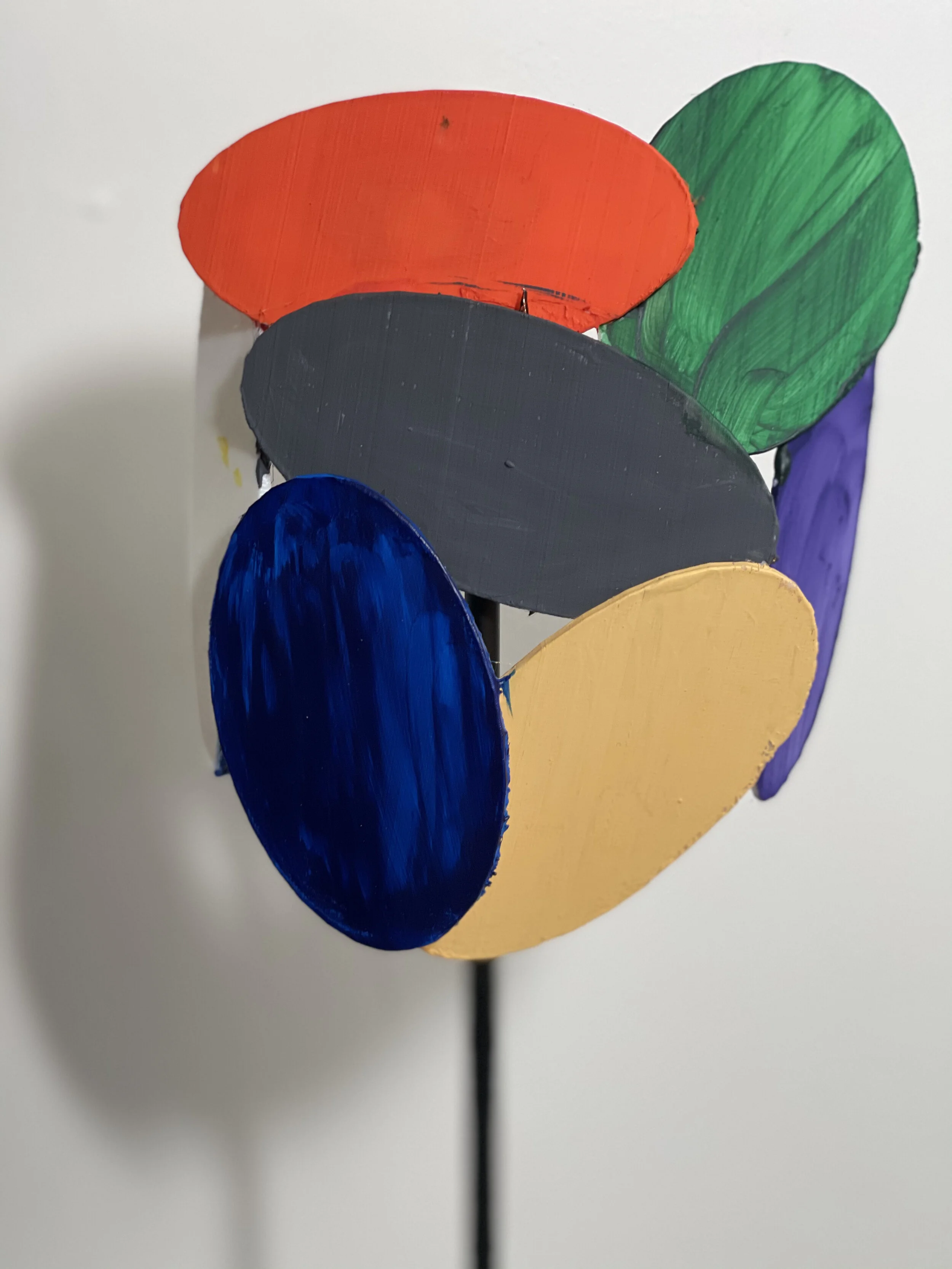
Mock Up of Shield Mask

Shield Mask with my Fathers picture superimposed
My previous work concentrated on archive photographs and images, so I decided it would be interesting to introduce a third dimension. To bring the characters in the narrative alive and to exact my memories on them.
I decided to explore the production of 3D images using a more refined approach from the Paper mache. I had created 3D architectural models in my previous profession and practised in using 3D software. This idea stemmed from a conversation with Wendy, who liked my approach in implementing Photoshop to add a more sophisticated finish to my models. To this end, I purchased a 3D printer
3D printers are not yet consumer-friendly, and it is a steep learning curve to produce anything useable. Despite all the instruction videos on YouTube, I've found trial and error the best learning tool, and fortunately, the material costs are comparatively low
To create the models, I am using software called Blender, it is open-source yet very capable. I use a plugin called Facebuilder, which forms a mesh which, when manipulated around a photograph, creates a 3D model. The accuracy improves the more pictures available of the person, but it can still work from one image with some creativity. I have created heads of my Mother, sibling and myself sofar.
.
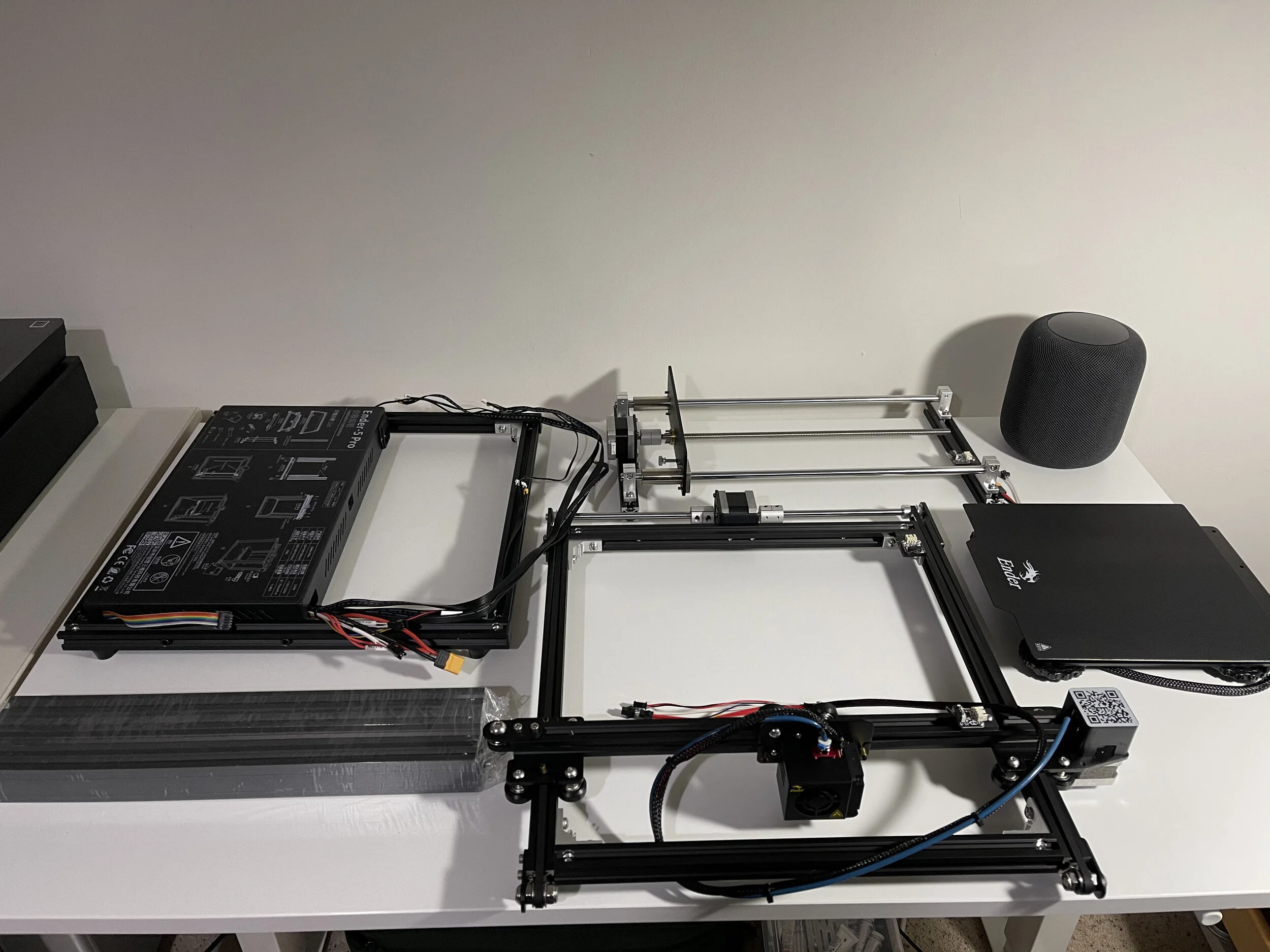
3D Printer out of the box
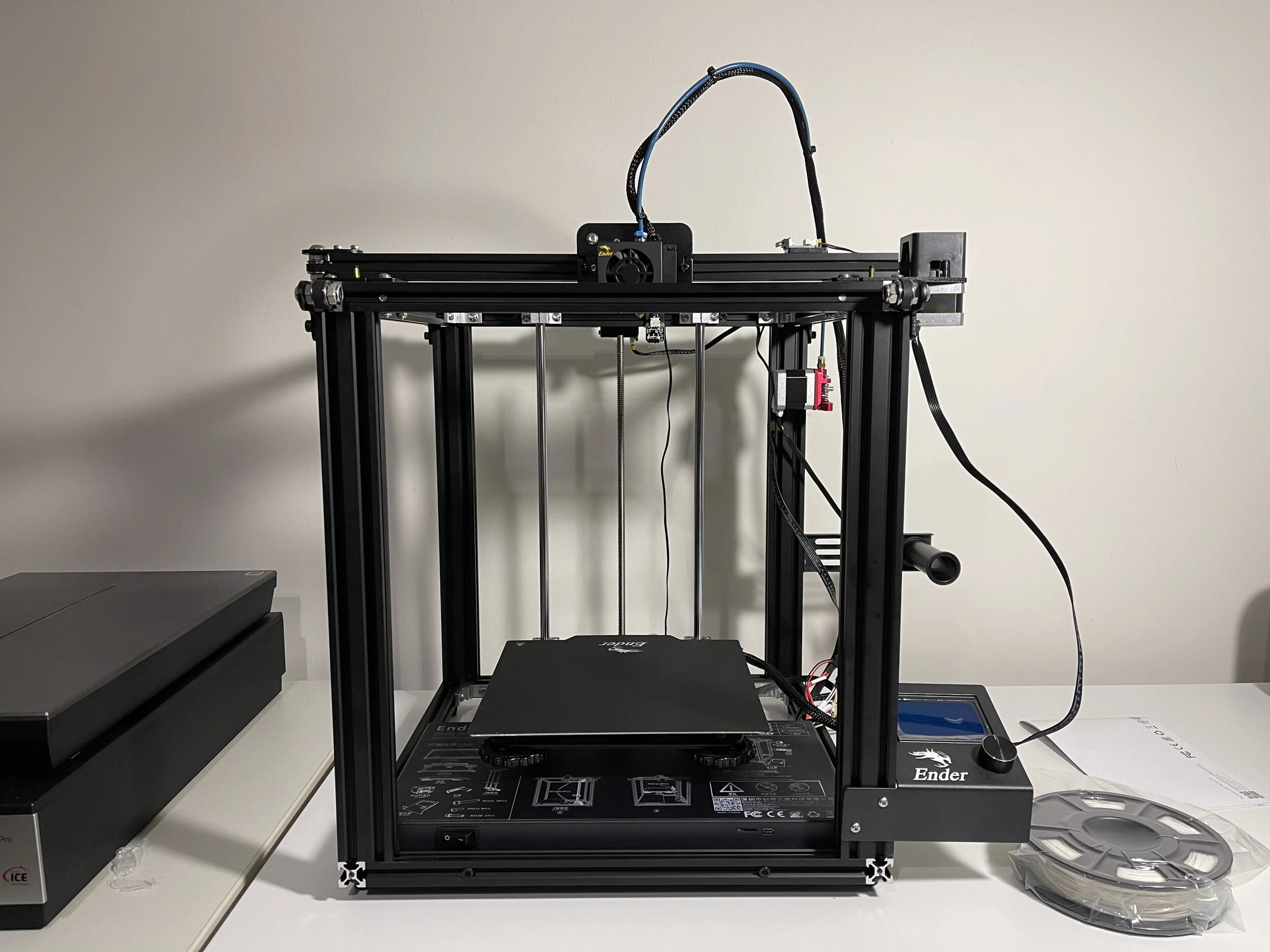
3D printer constructed
I am printing the models in a white PLA filament as this provides the best options if I wish to paint or colour the masks. Also, I will try and project images on to the models and have purchased a small digital projector. I aim to build a large mask of myself and use pictures of my family projected onto it. The final work will be photographed or videoed, depending on how I want to display it.
I had an idea to reassess what a mask is and what it does. I started by dividing the face in to different zones, my idea was to cut these zones and mount them on a base to create a 3D effect. I liked the idea of rotating the masks until they formed the face. I did a rough model using wooden dowel with the picture mounted on board and a base mask to fix to. It’s proving very difficult and Im not sure if it’s possible other than using a computer generated model. I will chat with Wendy in my next meeting to see if its worth pursuing. If the concept worked it would be a good way of transferring the still image to video to display in a gallery.

Dividing the image

How the forms interact

Colour Zone

Colour Zone 2

Many facets

3D Mask Experiment
Exploring different methods of mask making, I decided to experiment with plaster bandage. This would allow me to build up the face rather than rely on the original contours of the base. I want to create texture and then paste images on to the surface of the dried plaster. My initial trial has proved problematic as the base masks gets too wet and if the plaster is laid too thickly its produces undesired results. I intend to try again using thinner layers and will swap the cardboard base for something more robust. I am also going to experiment with modelling clay.
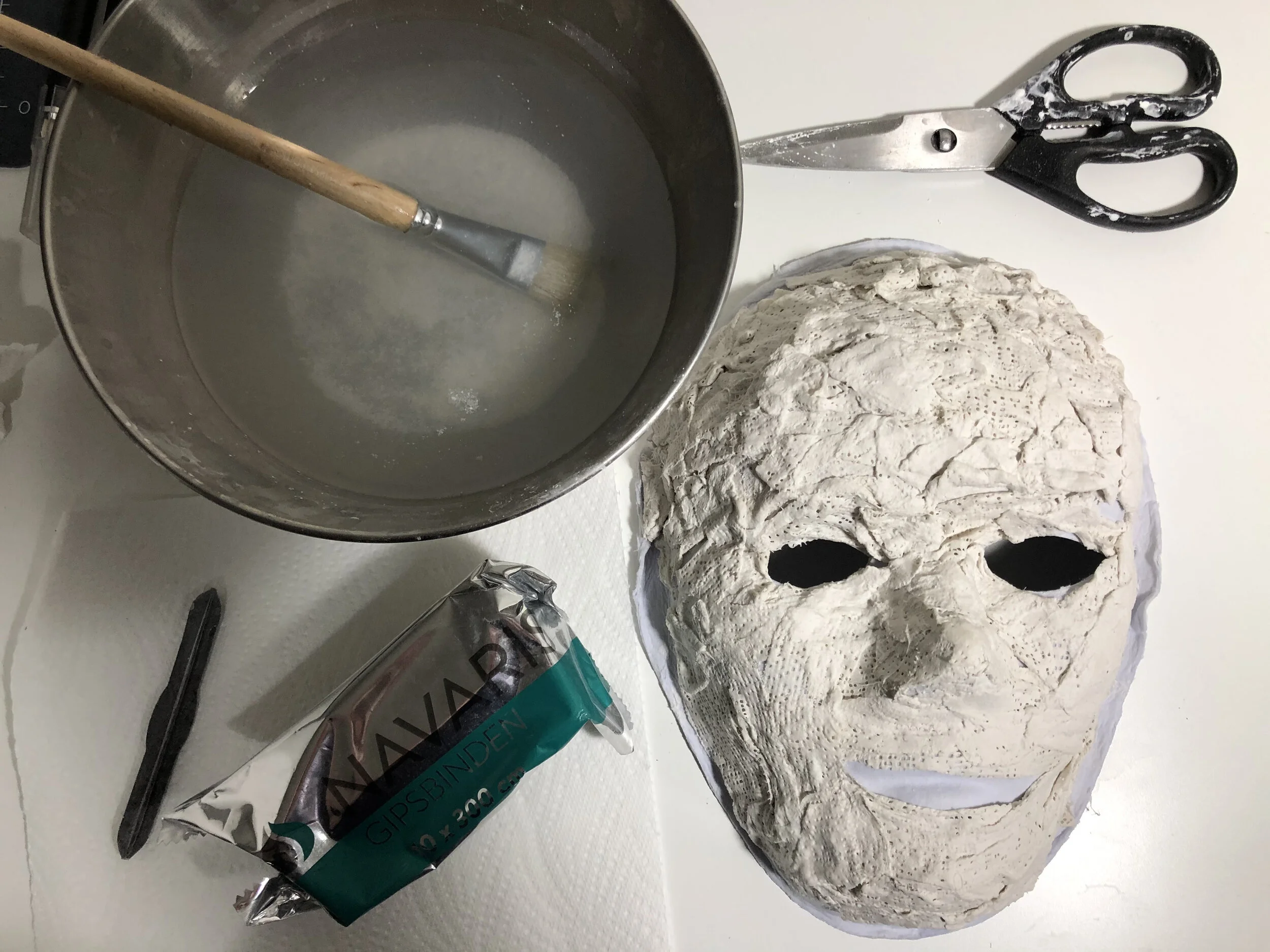
Plaster Mask Making
I have been experimenting with the construction of face masks to represent members of my family. My intention is not to accurately depict them, but rather describe how I felt about each individual. I have already documented that my relationship with my siblings is troubled and this gave me the opportunity to express this. My first attempt involved using blank paper masks which I glued ripped photographs to the base. Ripping the photographs provided the opportunity to manipulate the image in a way that I felt better suited my memory. The six masks I produced using this method, included two of my mother, with the intention of symbolising the two sides of her character.
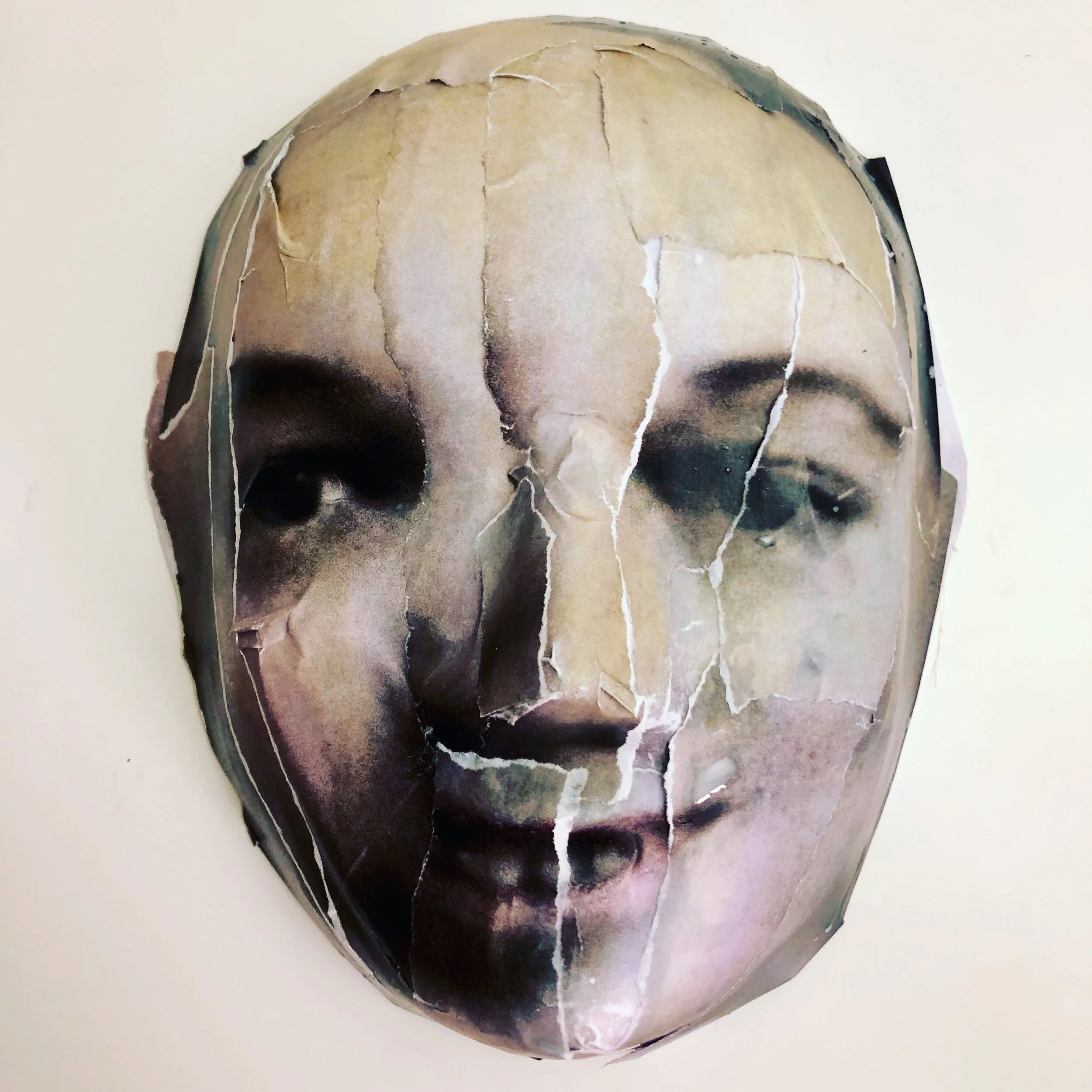
My Mother Mask - Two sides
Despite the simplistic technique, I believe the masks have been successful as a first attempt. They are to be used in conjunction with the letters I am writing to my parents